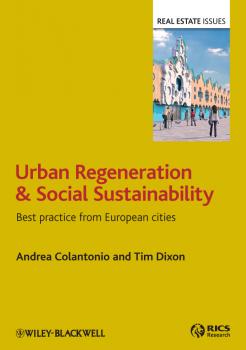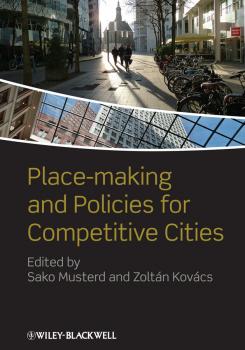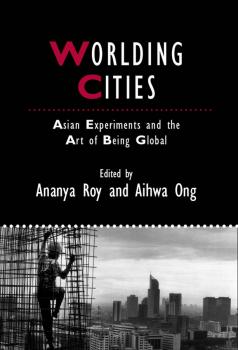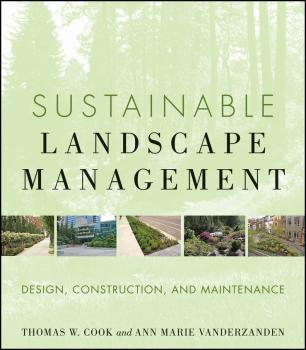Архитектура
Различные книги в жанре АрхитектураSun, Wind, and Light: Architectural Design Strategies
An updated guide to designing buildings that heat with the sun, cool with the wind, and light with the sky. This fully updated Third Edition covers principles of designing buildings that use the sun for heating, wind for cooling, and daylight for natural lighting. Using hundreds of illustrations, this book offers practical strategies that give the designer the tools they need to make energy efficient buildings. Hundreds of illustrations and practical strategies give the designer the tools they need to make energy efficient buildings. Organized to quickly guide the designer in making buildings respond to the sun, wind and light.
Planning in Divided Cities
Does planning in contested cities inadvertedly make the divisions worse? The 60s and 70s saw a strong role of planning, social engineering, etc but there has since been a move towards a more decentralised ‘community planning’ approach. The book examines urban planning and policy in the context of deeply contested space, where place identity and cultural affinities are reshaping cities. Throughout the world, contentions around identity and territory abound, and in Britain, this problem has found recent expression in debates about multiculturalism and social cohesion. These issues are most visible in the urban arena, where socially polarised communities co-habit cities also marked by divided ethnic loyalties. The relationship between the two is complicated by the typical pattern that social disadvantage is disproportionately concentrated among ethnic groups, who also experience a social and cultural estrangement, based on religious or racial identity. Navigating between social exclusion and community cohesion is essential for the urban challenges of efficient resource use, environmental enhancement, and the development of a flourishing economy. The book addresses planning in divided cities in a UK and international context, examining cities such as Chicago, hyper-segregated around race, and Jerusalem, acting as a crucible for a wider conflict. The first section deals with concepts and theories, examining the research literature and situating the issue within the urban challenges of competitiveness and inclusion. Section 2 covers collaborative planning and identifies models of planning, policy and urban governance that can operate in contested space. Section 3 presents case studies from Belfast, Chicago and Jerusalem, examining both the historical/contemporary features of these cities and their potential trajectories. The final section offers conclusions and ways forward, drawing the lessons for creating shared space in a pluralist cities and addressing cohesion and multiculturalism. • Addresses important contemporary issue of social cohesion vs. urban competitiveness • focus on impact of government policies will appeal to practitioners in urban management, local government and regeneration • Examines role of planning in cities worldwide divided by religion, race, socio-economic, etc • Explores debate about contested space in urban policy and planning • Identifies models for understanding contested spaces in cities as a way of improving effectiveness of government policy
Urban Regeneration and Social Sustainability. Best Practice from European Cities
Urban regeneration is a key focus for public policy throughout Europe. This book examines social sustainability and analyses its meaning. The authors offer a comprehensive European perspective to identify best practices in sustainable urban regeneration in five major cities in Spain, Italy, Netherlands, Germany, and the UK. This authoritative overview of the scholarly literature makes the book essential reading for researchers and post-graduate students in sustainable development, real estate, geography, urban studies, and urban planning, as well as consultants and policy advisors in urban regeneration and the built environment.
Place-making and Policies for Competitive Cities
Urban policy makers are increasingly striving to strengthen the economic competitiveness of their cities. Currently, they do that mainly in the field of the creative knowledge economy – arts, media, entertainment, creative business services, architecture, publishing, design; and ICT, R&D, finance, and law. This book is about the policies that help to realise such objectives: policies driven by classic location theory, cluster policies, ‘creative class’ policies aimed at attracting talent, as well as policies that connect to pathways, place and personal networks. The experiences and policy strategies of 13 city-regions across Europe have been investigated: Amsterdam, Barcelona, Birmingham, Budapest, Dublin, Helsinki, Leipzig, Milan, Munich, Poznan, Riga, Sofia and Toulouse. All have different histories and roles: capital cities and secondary cities; cities with different economies and industries; port-based cities and land-locked cities. And all 13 have different cultural, political and welfare state traditions. Through this wide set of contexts, Place-making and Policies for Competitive Citiescontributes to the debate about the development of creative knowledge cities, their economic growth and competitiveness and advocates the development of context-sensitive tailored approaches. Chapter authors from the 13 European cities rigorously evaluate, reformulate and test assumptions behind old and new policies. This solidly-grounded and policy-focused study on the urban policy of place-making highlights practices for different contexts in managing knowledge-intensive cities and, by drawing on the varied experiences from across Europe, it establishes the state-of-the-art for both academic and policy debates in a fast-moving field.
Worlding Cities. Asian Experiments and the Art of Being Global
Worlding Cities is the first serious examination of Asian urbanism to highlight the connections between different Asian models and practices of urbanization. It includes important contributions from a respected group of scholars across a range of generations, disciplines, and sites of study. Describes the new theoretical framework of ‘worlding’ Substantially expands and updates the themes of capital and culture Includes a unique collection of authors across generations, disciplines, and sites of study Demonstrates how references to Asian power, success, and hegemony make possible urban development and limit urban politics
Sustainable Landscape Management. Design, Construction, and Maintenance
The complete guide to the sustainable management of landscapes A must-have guide for anyone working with landscapes, Sustainable Landscape Management eases the transition of the landscape industry into a new era of green consciousness. Filled with examples that illustrate best practices, the book provides a practical framework for the development??of sustainable management strategies from design to execution and, eventually, to maintenance in an effort to construct landscapes that function more efficiently and minimize the impact on the environment. Sustainable Landscape Management includes: An overview of sustainable design and construction techniques as the basis for the maintenance and management of constructed landscapes Coverage of ecosystem development, managing landscape beds, managing trees and shrubs, and lawn care An entire chapter devoted to issues associated with the use of chemicals in landscape management Guidance on retrofitting existing landscapes for sustainability Reshaping the landscape takes on more significance as society embraces a new value system for advancing environmentally friendly ideals. By following the management principles laid out in this book, readers will learn the key elements for building landscapes that integrate beauty and function to create a sustainable presence that extends well into the future.
Historic Preservation and the Livable City
For both the preservation professional and urban planner, this book shows how preservation is a key to the creation of livable cities. The author Eric Allison, the founder and coordinated of the graduate historic preservation program at Pratt Institute in New York City, offers tools and case studies that preservationists and planners can learn from in implementing preservation projects or plans in cities large and small. This book is a must read for anyone working in or interested in these fields and the creation and maintenance of livable cities.
Designing the Sustainable Site, Enhanced Edition. Integrated Design Strategies for Small Scale Sites and Residential Landscapes
The full-color, practical guide to designing sustainable residential landscapes and small-scale sites «Going green» is no longer a choice; it's a necessity. Developed landscapes have played a significant role in exacerbating the environmental and social problems that threaten humanity; however, they can also be part of the solution. Designing the Sustainable Site: Integrated Design Strategies for Small-Scale Sites and Residential Landscapes gives site designers and landscape architects the tools and information they need to become a driving force in the quest for sustainability. Advocating a regenerative design approach in which built landscapes sustain and restore vital ecological functions, this book guides readers through a design process for new and redeveloped sites that not only minimizes damage to the environment but also actively helps to repair it. Designing the Sustainable Site: Assists designers in identifying and incorporating sustainable practices that have the greatest positive impact on both the project and the surrounding community, within a regional context Uses photographs, sketches, and case studies to provide a comprehensive look at successful green landscape design Illustrates how sustainable practices are relevant and applicable to projects of any size or budget Demonstrates how built environments can protect and restore ecosystem services Explains the multiple and far-reaching benefits that sustainable design solutions can provide Assists project teams in fulfilling credit requirements of green building assessment tools, such as LEED, BREEAM, or SITES With attention to six global environmental challenges—including air pollution, urban flooding and water pollution, water shortages, invasive species, and loss of biodiversity—along with guidance on how to meet these challenges, Designing the Sustainable Site is a practical design manual for sustainable alternatives to small-scale site and residential landscape design.
The Historic Urban Landscape. Managing Heritage in an Urban Century
This book offers a comprehensive overview of the intellectual developments in urban conservation. The authors offer unique insights from UNESCO's World Heritage Centre and the book is richly illustrated with colour photographs. Examples are drawn from urban heritage sites worldwide from Timbuktu to Liverpool to demonstrate key issues and best practice in urban conservation today. The book offers an invaluable resource for architects, planners, surveyors and engineers worldwide working in heritage conservation, as well as for local authority conservation officers and managers of heritage sites.
Therapeutic Landscapes. An Evidence-Based Approach to Designing Healing Gardens and Restorative Outdoor Spaces
This comprehensive and authoritative guide offers an evidence-based overview of healing gardens and therapeutic landscapes from planning to post-occupancy evaluation. It provides general guidelines for designers and other stakeholders in a variety of projects, as well as patient-specific guidelines covering twelve categories ranging from burn patients, psychiatric patients, to hospice and Alzheimer's patients, among others. Sections on participatory design and funding offer valuable guidance to the entire team, not just designers, while a planting and maintenance chapter gives critical information to ensure that safety, longevity, and budgetary concerns are addressed.









